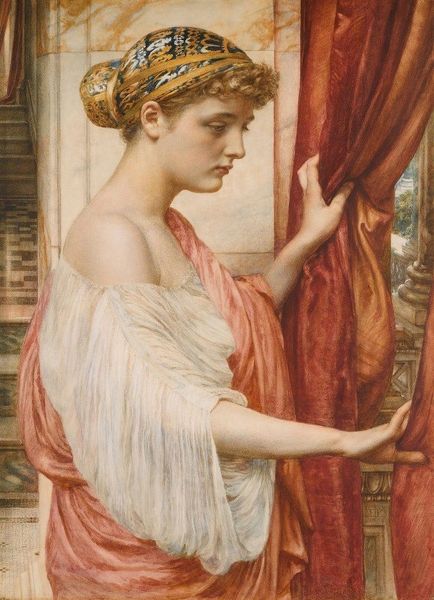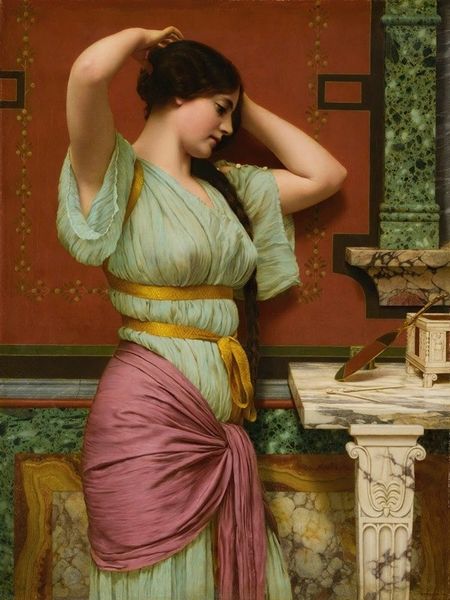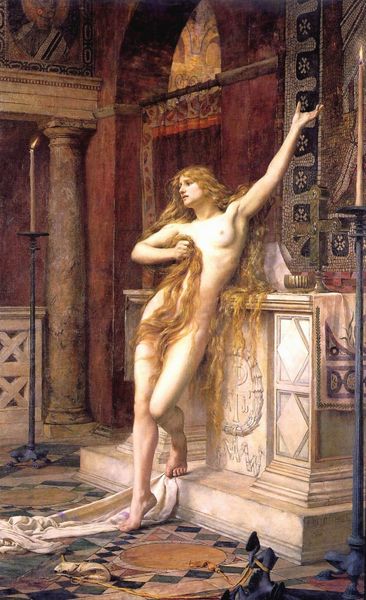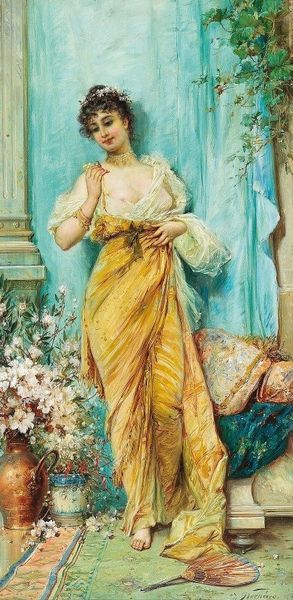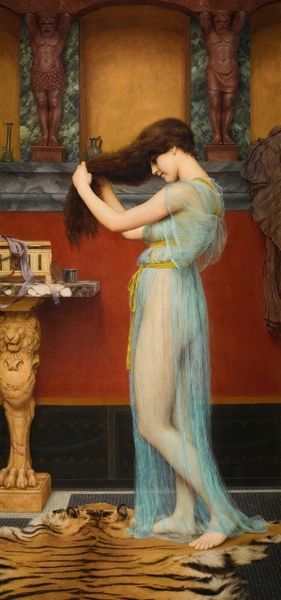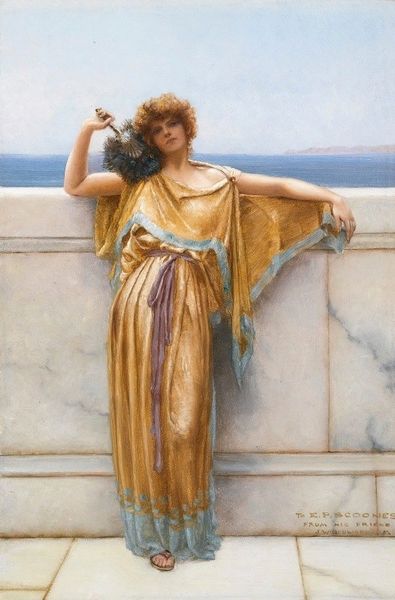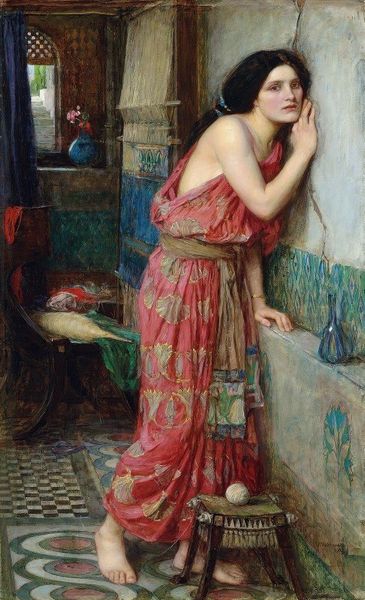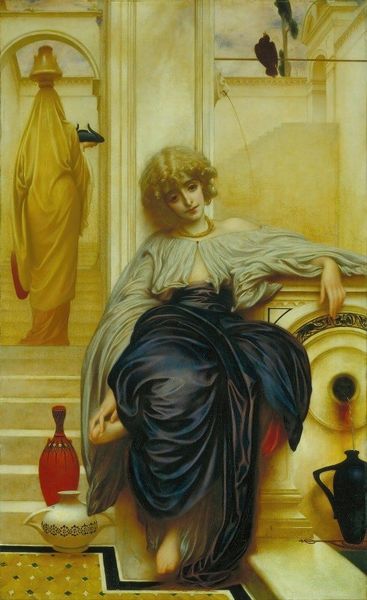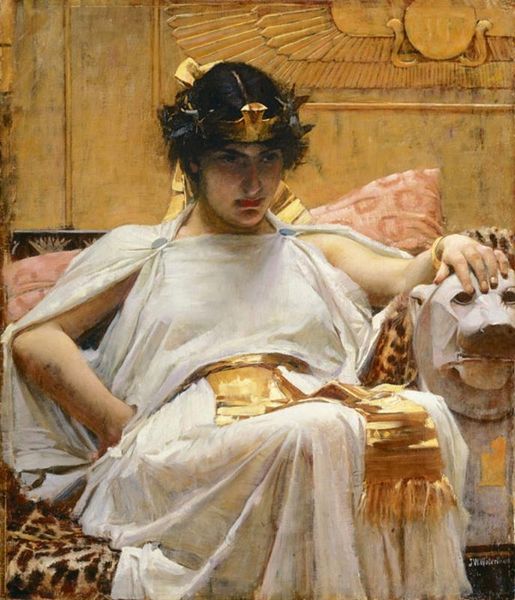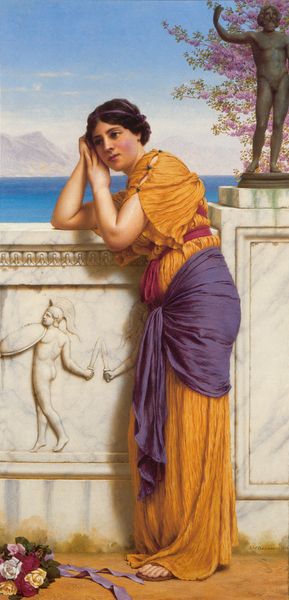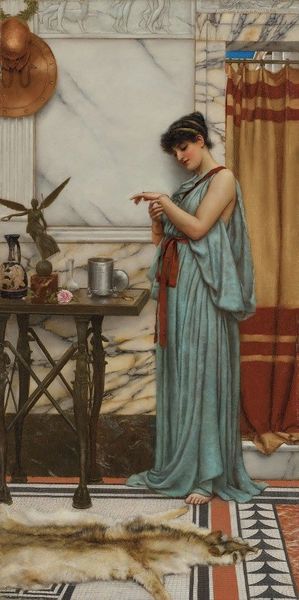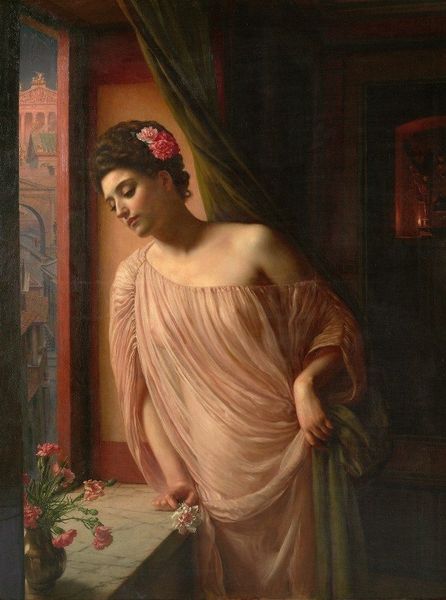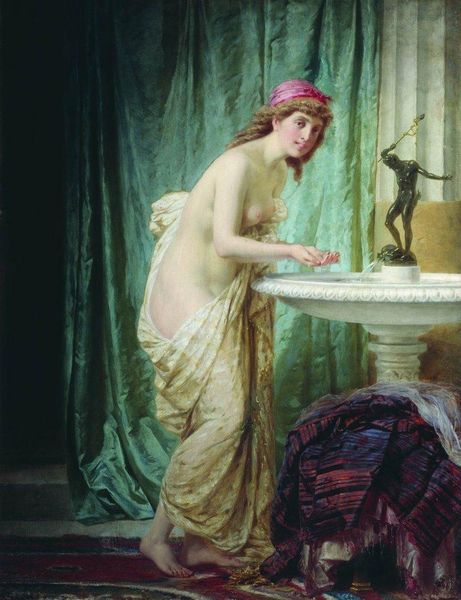
Copyright: Public Domain: Artvee
Curator: Standing before us is Edward John Poynter's "Diadumenè," painted in 1893. The artist worked primarily with oil on canvas, if I remember correctly. Editor: My immediate impression is of stillness. There's such a serene and polished quality to the light and composition. Everything is carefully placed to create this tranquil scene. Curator: That tranquility speaks to the broader aesthetic project of Academic art, to evoke timeless ideals and imbue images with a sense of stability. You find echoes of this in the overall composition but in the historical source that's relevant here: it’s thought to be modeled after a sculpture by the same name created by Polykleitos. Diadumenè represents an athletic male tying a victor's ribbon around his head, though, not the more commonplace interpretation in feminine figures. Editor: Yes, the title adds a layer, acknowledging this earlier classical figure. The crisp edges of the marble and the sharp geometries of the tiling lend an additional formal harmony that emphasizes a timeless perfection, very intentional on Poynter's part, and I wonder if that impulse also comes into play to refigure it into a female form. How does this shift in gender play a part of Poynter's representation? Curator: It signals a movement to re-cast canonical Greek ideas and themes through a late Victorian lens, of course, even the faintest echo of Pre-Raphaelitism might ring here too. The pose itself—this almost nonchalant self-adornment—resonates, placing female beauty into this revered context. Notice, too, how even small items such as the sea shells that add visual flourishes seem almost stage-like to complement the model herself. Editor: It's the shell in contrast to the clean, almost clinical finish elsewhere in the piece that I am particularly interested in. It does ground the space somehow and hints to some narrative beyond a simple depiction of timeless ideals of beauty. Curator: Indeed. It evokes a powerful association—almost a visual echo chamber in how our understanding and the model’s themselves relate, in effect transforming and transfiguring into new stories that persist through the centuries. Editor: It's fascinating how Poynter can invite this complex dialog around historical images simply through subtle, compositional details, allowing viewers to access classical memory via their modern gaze. Curator: Precisely. By blending Academic technique with these conscious, almost understated references, he’s ensuring the stories, even with its change of tone, remain resonantly relevant across time.
Comments
No comments
Be the first to comment and join the conversation on the ultimate creative platform.
